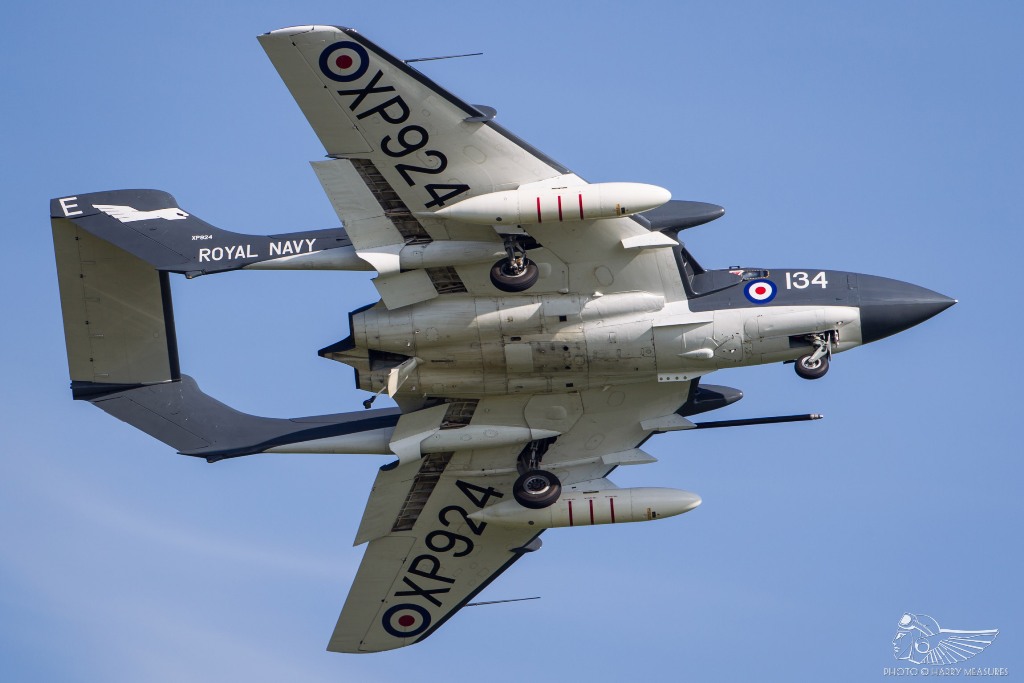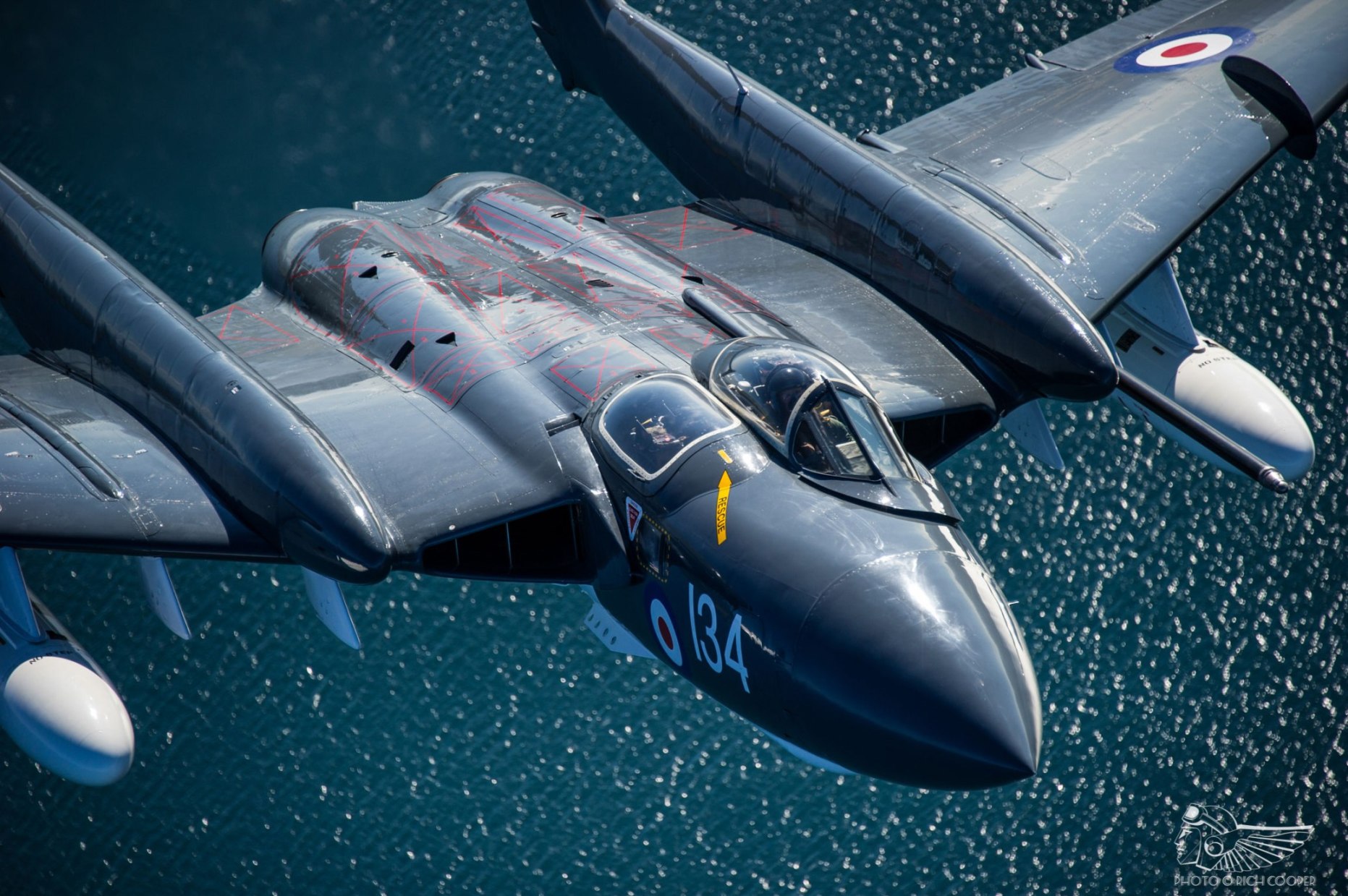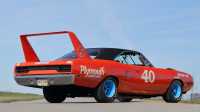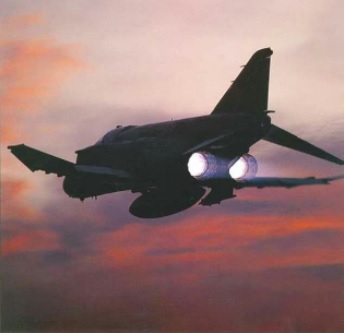The De Havilland Sea Vixen - 1962~1972
The de Havilland Sea Vixen was a jet-powered fleet defense fighter, equipped with a modern radar and air-to-air missiles for its primary role. When it entered service, it was the first British aircraft to be solely armed with missiles, rockets and bombs; it was also the first fighter aircraft operated by the Fleet Air Arm with no gun armament.
The Sea Vixen FAW.1 was armed with four de Havilland Firestreak air-to-air missiles, while the Sea Vixen FAW.2 could also carry the later, more capable Red Top missile. The original DH.110 design offered to the RAF was armed with four cannon before soon being replaced with an all-missile armament. The Red Top homing head was pointed in the direction of the target by slaving it to the AI18 radar, which was operated by the observer.
In addition to its principal fleet-defense role, the Sea Vixen was also used in the ground-attack role for which it could be armed with two Microcell unguided two-inch (51 mm) rocket packs, Bullpup air-to-ground missiles, and four 500 lb (227 kg) or two 1,000 lb (454 kg) bombs. The Sea Vixen was equipped with a refueling probe for aerial refueling from tanker aircraft to extend its range. It could also be equipped as a tanker for refueling other aircraft. The Sea Vixen FAW.1 was cleared to carry the Red Beard free-fall nuclear bomb in the event of an "extreme operational emergency".
The Sea Vixen was powered by a pair of Rolls-Royce Avon 208 turbojet engines and could reach a maximum speed of 690 mph (1,110 km/h) and a range of up to 600 mi (1,000 km). It had a twin-boom tail configuration, as used on the earlier de Havilland Sea Vampire and Sea Venom fighter aircraft. The internal volume of the tail boom was used for both fuel and avionics, and was considerably enlarged for this purpose on the improved Sea Vixen FAW.2. The twin-boom tail reduced the length and height of the aircraft, which reduced the stowage area and head-room required onboard aircraft carriers; it also minimized asymmetry during single engine flying, reduced the length of the jet pipes and improved maintenance access.
The fuselage comprises several sections, the principal being the one-piece central and stub-wing assembly section. The front fuselage, composed of the pressurised cabin, the airbrake below the pressure flooring and the radar compartment, and its hinged radome are mounted upon four attachments on the forward face of the front spar. Various electrical compartments are located aft of the front spar, above the wing, which are accessible through hatches. The engines are installed within the main fuselage aft of the main box; they could be removed from the fuselage for servicing via detachable panels on the upper fuselage surface. Sections of the fuselage skin were chemical milled while other parts were machine milled. The powered folding wing made use of a pair of wing-fold joints which involved a total of six main attachment points.
The Sea Vixen had a crew of two, a pilot and a radar operator. The pilot's canopy was offset to the left-hand side of the fuselage, while the radar operator sat to the right completely within the fuselage, the latter gaining access to his position through a flush-fitting top hatch, nicknamed the "Coal Hole". The observer's position was darkened and located deeper down into the fuselage, the former quality been seen to improve the visibility of the radar imagery. Both positions were fitted with fully automated height adjustable Martin-Baker Mk.4 ejector seats, which were capable of being deployed under a range of conditions and circumstances, including the aircraft being submerged in water. Each crew member had a single centralised service connector comprising circuits that served ventilated g-suits as well as controls for humidity and temperature for crew comfort.
The flying controls of the Sea Vixen were relatively complex, which controlled the fully powered tailplane, ailerons, and rudder; these controls remained usable even in the absence of electrical power, such as in the event of a double engine failure. Actuation of the powered flight control surfaces was provided by a pair of independent hydraulic systems and typically featured variable gearing of control movements over differing speeds. An intricate three-section flap arrangement was employed, partially due to the nature of the wing's geometry. The navigation, flight instrumentation and communications equipment included ground and air position indicators, a reference gyro, an autopilot capable of maintaining altitude and speed as well as yaw and pitch damping, tactical air navigation system (TACAN), and ultra high frequency (UHF) radio system.
[This message has been edited by Boondawg (edited 12-07-2020).]




























